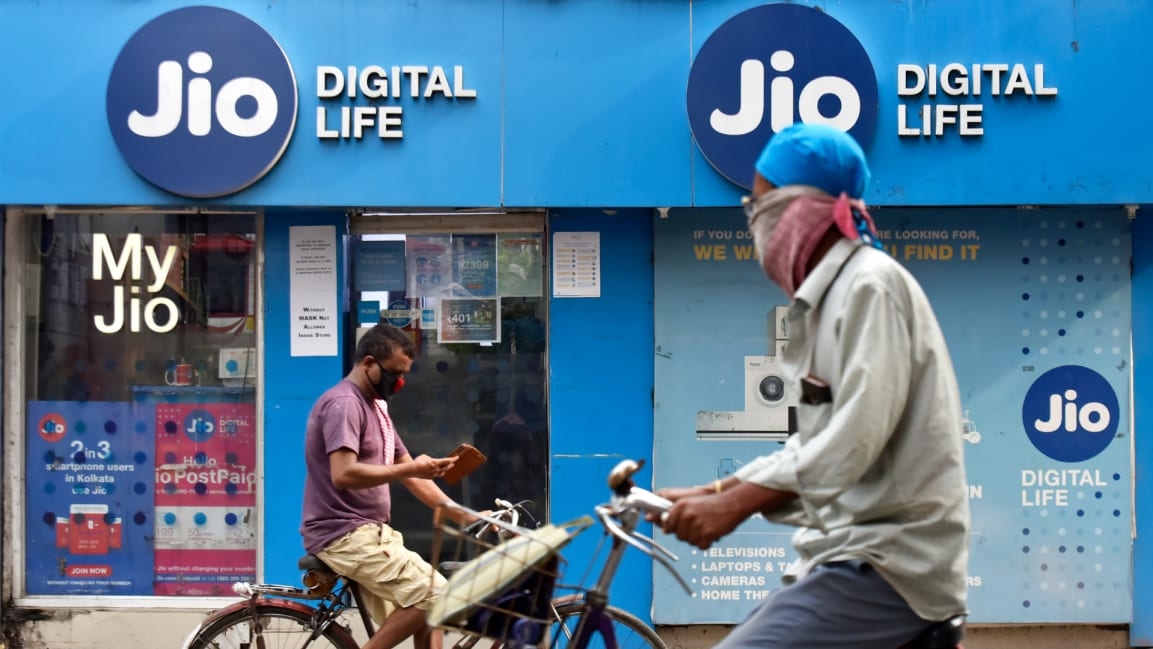Why India’s ultracheap new smartphone is critical to Google’s future
The 5G arms race is about to kick off in India and Google has a head start.
Last month, the company announced that it’s partnering with Reliance Jio, India’s leading wireless carrier, to launch an “ultra-affordable” smartphone in the country. Called JioPhone Next and due to arrive in September, it will run on an optimized version of Android OS. It will also aim to leverage Jio’s vast network and ability to reach Indian consumers to reach “millions of new users who will experience the internet for the very first time.”
In order to understand the significance of JioPhone Next, it’s worth taking a step book to look at what Google has been up to in India. Over the last few years, the country has undergone a digital revolution. As cellular data and smartphone prices continue to fall, hundreds of millions have logged on for the first time. Today, India hosts nearly 700 million internet users–more than double that of the United States–and this upward trajectory will only climb, since half of the country’s population still isn’t online.

[Photo: Jio]
With the Chinese market either cut off to western companies or rife with hazards, U.S. tech giants consider India their last chance to acquire a giant pool of new users. For Google, the country is a project that’s been a long time in making and it’s been part of the country’s digitization journey well before the current connectivity boom.
With its six-year-old “Next Billion Users” effort, Google has been hard at work to capture this upcoming wave of internet users, most of whom will come from non-English speaking rural regions. Its initiatives have covered the end-to-end online experience—from teaching digital literacy to offering free internet access—and prepared it for this moment. For instance, its “Internet Saathi” program offered Android and internet lessons to millions of women from underprivileged backgrounds. And Google Station supplied complimentary internet access at over 400 railway stations. The list goes on.
A $10 billion bet
Last year, Google further amplified its investment in India with a $10 billion “India Digitization Fund”–about half of which went into acquiring over 7% of Reliance Jio. The JioPhone Next is, in many ways, the culmination of these efforts for Google.
Prachir Singh, a senior research analyst at Counterpoint Research, estimates that the JioPhone Next can potentially target 520 million users, which includes 320 million dumbphone users and 150 million unconnected people who will likely come online in the next year or two.
The JioPhone Next is fine-tuned for such first-time smartphone and internet users. It comes loaded with Google’s services for emerging markets, such as instant translation in regional languages and a “Listen” tool that can read-aloud any on-screen content like web pages and text messages.
Jio has emerged as the hot ticket into India’s burgeoning digital economy.
The JioPhone Next also benefits from a range of Android perks usually reserved for Google’s own Pixel line of phones. Its camera app comes bundled with Google’s HDR technology, which will come in handy given the hardware won’t be top-of-the-line. Plus, Google says it will regularly roll out “feature drops” and security updates to the JioPhone Next.
While Google takes care of the underlying technology, Reliance Jio is responsible for driving traffic to the JioPhone Next. Jio has been able to sell its phones at a breakneck pace by offering them at little or no cost and earning when people pay for its cellular plans. In 2018, when the telco announced a 4G-enabled feature phone, it soared to the top of the world leaderboards in just 10 months. Google is hoping it can replicate that success with the JioPhone Next.
For both Jio and Google, Counterpoint’s Singh says, this new initiative is about more than selling smartphones. Like Google, Jio has a suite of content services for movies and news. And it’s still looking to quickly add more subscribers to its mobile network. As has been the case with Jio’s feature phones, the JioPhone Next will be heavily subsidized. If history is any indication, it will be available for free to existing Jio feature phone users.
That’s an easy 60 million user win for Google—and an opportunity to sign all those new smartphone owners up for its services.
Local expertise
The Jio alliance has broader significance for Google. Although the search engine giant has stayed in local authorities’ good books by complying with any new laws, U.S. tech giants have recently come under increased regulatory pressure in India as the government tightens its grip over media and social networks. Partnering up with a local conglomerate, experts believe, will ensure that Google can continue its march without undue hassle.
GlobalData analyst Deepa Dhingra says that local support and collaboration “can reap significant returns for western companies,” and it’s vital for them to join hands with domestic players to sail through the “fiercely competitive nature of the telecom market and highly regulated regime in India.”
Besides, just on its own, Google has been unable to crack the sub-$100 price segment in India. Two other initiatives to build devices for emerging markets, Android One and Android Go, struggled to take off.
“With Jio, it could be different,” says Singh, thanks to the “local expertise of Indian companies” like Reliance Jio that have historically done well in offering products customized to Indian consumers’ needs.
In addition, the Jio partnership is also unlocking several new avenues of growth for Google’s enterprise arm. As part of the tie-up, Jio has agreed to shift its core retail businesses–the largest retailer in the country–to Google Cloud’s infrastructure, a deal that will reportedly earn the latter at least $1 billion in revenue.
Google isn’t alone either. For a series of U.S. tech giants, including Facebook, Snap, and Qualcomm, Jio has emerged as the hot ticket into India’s burgeoning digital economy. Next owners, for instance, can access Snapchat lenses right from the camera app. Though the JioPhone Next is a 4G device, U.S. companies hope that it will help them secure a front-row seat as India gets ready to deploy 5G widely.
“We believe,” GlobalData’s Dhingra says, “that Google is likely to play an important and crucial role in the development of India’s 5G ecosystem and forthcoming digital era.”
Shubham Agarwal is a freelance technology journalist from Ahmedabad, India. His work has previously appeared in Digital Trends, HuffPost, and more. You can reach out to him on Twitter.
(44)



